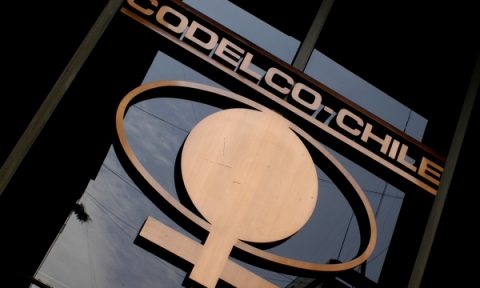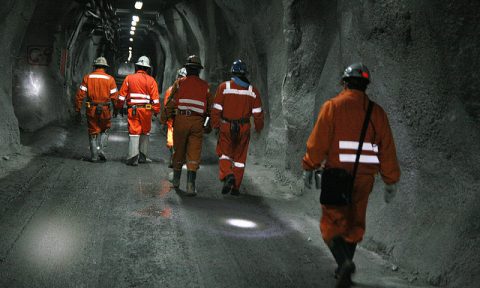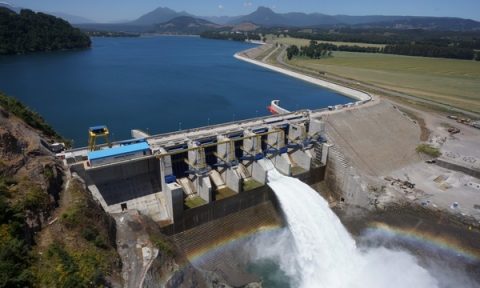Green tax: how they affect and what businesses expect

Preliminary figures from the Government indicate that 142 stationary sources will be affected by the new tax. Of these, 93 correspond to power generator companies and 49 to industries as cement and metallurgical ones.
Power Generators, cement industry and metallurgical companies will be the most affected by green taxes. This assessment, which will be taxed emissions of pollutants to have a more sustainable country, will affect close to 150 stationary sources of emission, according to preliminary data from the Ministry of Health and the Superintendent of Environment.
The tax reform bill being discussed in Congress includes three so-called green taxes: one that will affect the sale of diesel vehicles; another general, affecting the emission of CO2, and that the original draft amounted the tax to $ 5-ton, and the last one, focused on local pollutants such as sulfur dioxide (SO2), nitrogen (NOx) and particulate matter (PM). The latter two taxes, according to the agreement signed between the government and the Senate Finance Committee, July 8th, will be applied to stationary sources that have a thermal input equal or exceeding 50 megawatts (MW).
This specification is relevant, since the electricity sector accused discrimination in the way that the new tax would apply, focusing the impact on this sector and excluding, for example, mining smelters. The protocol states that “the scope of the tax issue will be clarified to stationary sources.” What is finally written in the instructions have you guessing to the industrial sector.
Preliminary estimates from the Government are that 142 stationary sources will be affected by the tax. Of these, 93 correspond to thermal generation, including units for power generation plants and private companies. The rest are stationary sources in the cement industry, paper, cellulose (biomass power plants will be excluded from payment), metallurgical and food.
To this it must be added the collection of information is done by the Ministry of Mining and where it should be included the seven foundries with which the industry operates today in the country. The number while important, says a source in the industrial sector, is less than the universe that initially envisaged the government, where about 500 companies dominating.
Closure or restructuring
The critical analysis within the industry anticipated by Sofofa’s President, Hermann von Mühlenbrock, who indicated that according to comparative experience, the new tax will have no impact on reducing emissions, but it can get from the market various companies. The Asimet’s President, Gastón Lewin, shares this vision. He indicates that it is not doing “politics of terror,” but that may be closing companies, “especially those who are already at the limit”.
He stresses that the manufacturing sector made a major effort to adapt operations to new emission standards affecting foundries. “This commitment is recognized by the authorities,” he says. He adds, the sector, had to make those investments in an adverse scenario, with high energy and labor costs and with strong onslaught of Asia on import products.
For CEO Melon, cement industry from the Peruvian Brescia Group, Jorge Eugenin, this tax does not jeopardize the continuity of the company, “which has over 100 years of history,” he says, “but it could force us to reorganize our processes to maintain our leadership”.
Eugenin explains that the company has always contributed to the development of the country and that the firm understands the concepts of development and sustainability are pursuing green taxes, but “we believe that what has gone published in the Memorandum of Understanding of the Senate could not generate the desired effects particularly in our industry”. One of these effects, he details, could be the immediate transfer of local production with imports generated by the possible closure of furnaces.
He also indicates that Chile is among the 10 countries that emit less CO2 in this industry and sector emissions are 20% below the world average.”This would mean loss of stable jobs, increase in global CO2 emissions and reducing the capacity of waste recycling to society”. The executive explained that the CO2 produced by the cement industry comes mainly from limestone decarbonization, rather than fossil fuels. This scenario indicates that the economic impact of this tax would mean an increase of about $ 3 per ton, “generating a competitive economic disadvantage to external markets that do not apply direct green taxes to the manufacture of cement, considering our emission factor”.
Unfair Competition
For CAP Steel, the situation is also critical. The company has already experienced a complex 2013, which involved a major restructuring of the plant Huachipato, downsizing and closure of a production line. With the new tax, the scenario is complicated again. The company says that “the cost would represent the application of taxes on emissions price is nontransferable, constituting a burden that directly affect the competitiveness of the domestic industry, severely threatening its viability”.
This, because being an integrated steel, it is not technically feasible migrate industrial processes to lower emission technologies. “The Carbon as chemical element is the key to the reduction of iron ore in the first stage of the process for obtaining steel agent. There is not now a technology that allows the blast furnaces operate with a different agent to the carbon from the coal”, says CAP.
In CAP Steel they said it would be paradoxical that as a result of this initiative, the domestic market ended up being supplied entirely by imported steel, originating in countries that produce no emissions regulation. “This is a new facet of unfair competition, that would be added to that already must face local steel production and whose negative effects can be compensated only by the automatic imposition of a customs surtax that replicate the effects of the tax at issue”, the company says.
What is expected
On all these points, in the private sector expect the bill, whose indications are entered all together in the next few weeks, to have clarity in what they want to tax and the amount it will have the tax. And also, there is gradual in its implementation, time should be much greater than five years, says Gastón Lewin.
For René Muga, executive vice president of the Generating companies of Chile, the details of the initiative “should be clearly written, because as it stands today, there are many gaps”. One point of interest in the sector is that generator companies can be exempt if the company already offsets the emissions remaining in the atmosphere. This, following that electrical companies, by obligation, imposed or voluntarily, already offset their emissions. “If we want with this is to reduce emissions and raise no money, there should be an incentive for the one who emits, but compensates, not have to pay the tax or may present as a tax credit everything he offset,” he explains.
To Jorge Eugenin, considering CO2 as a pollutant, as is proposed in the bill should be amended or eliminated because, in his view, a lien on the cement industry that does not consider goals and / or effects this contaminant global environmental benefits generated. If tax reform maintains the CO2 tax for the cement industry, he notes that “should be considered co-processing activity of our furnaces, similar to the case of sources using biomass” technology that will not pay this tax.
Source: La Tercera













